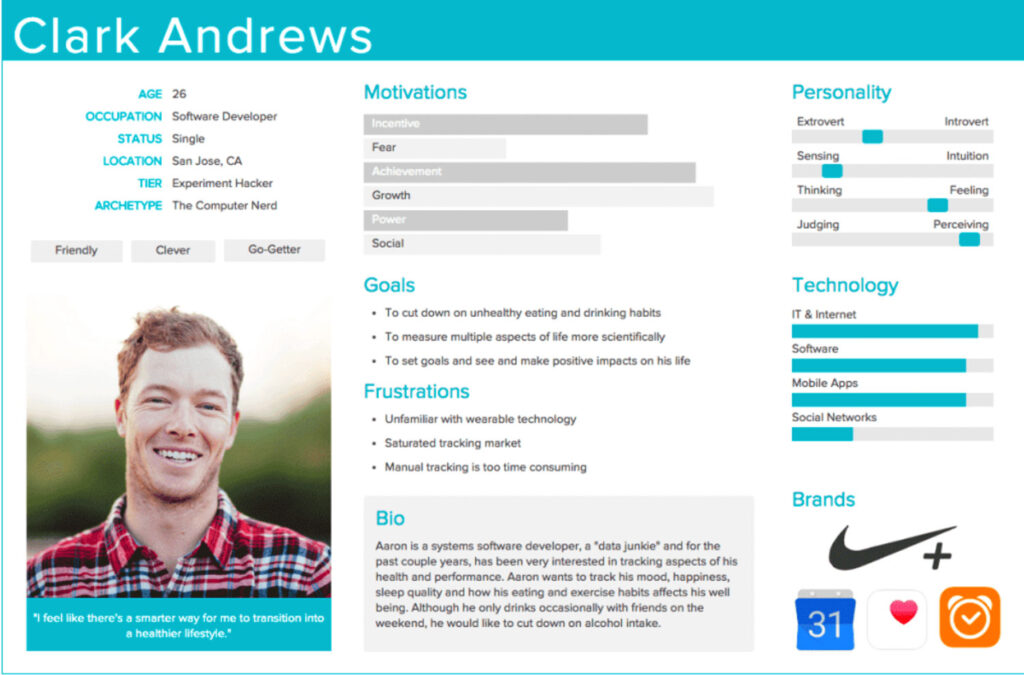For a company to succeed, its team members must work together toward a common goal. A positioning statement can help serve as a compass for the direction of your company and the success of your endeavors.
When a company knows and adheres to its mission and values, it understands its purpose and can become more efficient, productive, and profitable. Purpose-driven companies have 30% higher innovation and retain 40% more of their workforce. It helps to set your business apart from your competition, attracting new prospects and retaining current customers. As a result, you’ll generate more revenue for your business and can earn a reputation as the leader in your field. Creating a positioning statement can help set you on the course for continued success and further growth.
Keep reading to learn what a positioning statement is and how to create one to boost your business.
Key Takeaways
- A positioning statement briefly explains how your company is different from your competitors.
- A positioning statement builds a strong reputation for your business, leading to a loyal following and enabling you to provide a better customer experience.
- From knowing your target audience to identifying your differentiators, you can create an effective positioning statement in just seven steps.
What Exactly Is a Positioning Statement?
A positioning statement is a brief description explaining your company and setting you apart from the competition. In just a few sentences, you can identify your uniqueness and explain why your solutions are more valuable to your customer, thus shaping the public’s perception of your company.
Positioning statements help to serve as a roadmap for several areas of your business. It drives your strategies for:
- Content marketing for manufacturing companies: Feature the traits, products, and processes that make you unique in all your messaging.
- Brand marketing for manufacturing companies: Understanding what sets you apart from your competition enables you to build your brand identity.
- Marketing for manufacturers: A positioning statement helps you know who your audience is, their needs, and how your solutions can solve their problems.
A positioning statement is a powerful tool to deliver the right message to the right people and to help you gain invaluable insight into your company. When developing an effective statement, you must examine your brand and products in a new light. This statement helps you realize why your products and services exist, how they can boost your business, and what you’ll need to do to make it successful.
The following video explains how to find your positioning statement for optimal results:
Source: Exposure Ninja on YouTube
Why Is a Positioning Statement Important?
A positioning statement influences the way your audience regards your brand. Establishing brand identity and reputation is important because it can mean the difference between generating revenue or costing your business. A positioning statement people believe in can help you earn trust and develop a loyal following, helping drive website traffic for manufacturing companies which, as part of SEO basics for manufacturing and industrial companies, can increase visibility through higher SERPs.
A positioning statement also helps your team members realize what they need to do in their everyday duties to keep your company on track to meet its goals. It streamlines processes and increases efficiency, enabling you to provide a better customer experience at every stage of the customer journey. It sets you apart from the competition, earns you ongoing and repeat business, and ensures your longevity and continued success.

How to Create a Positioning Statement
As you craft a powerful positioning statement that sets you apart in your field, you must make some decisions. Here are seven steps and considerations to create an effective positioning statement.
1. Know Your Target Audience
For a positioning statement to be effective, you must first know who your target audience is before crafting quality content for your marketing efforts. Begin by examining demographics, needs, preferences, and pain points. Then, create a buyer persona to identify your ideal customer, helping you create messaging that resonates and increases the likelihood of conversions and revenue generation.

2. Choose a Business Category
Manufacturing is a large industry with an expansive possibility of specialties. Help narrow down your focus (and that of your customer) by choosing which category your company best identifies. Doing so provides context to your prospects as they consider your offerings and whether they are relevant to their needs. Whether you specialize in machine parts or metal fabrication, choosing a category for your business will help you streamline your messaging and reach the right people with your marketing.
3. Identify Your Differentiation
Identify the greatest aspect of your business that sets you apart from others in your field. Including too many details will confuse your audience, and broad statements aren’t compelling enough to earn their business. Be specific, direct, and brief. Look at your business from your audience’s perspective, and choose your differentiator from that viewpoint.
4. Explain the Reward
Your positioning statement should explain to your audience how your differentiator helps them reach their goals. It’s important to understand your target market and what they need. Thorough market research will help guide your efforts and let you know how to approach your audience to ensure their success which, in turn, ensures yours.
5. Find a Template
There are numerous ways to write your positioning statement, and many businesses have done them before you. If you’re unsure of the best format to follow for your statement, find a template that has already been created. For example, consider the following:
- Template 1: For [target audience] who [audience need] the [product] is a [category] that [unique benefit]. Unlike [competitor], our product [differentiation].
These templates are usually just two or three sentences long and greatly impact your audience.
6. Customize the Information
Once you’ve found a template, drop in your information and customize the details to meet your unique needs. Using the template above, here is one example of how to use this outline to create your positioning statement:
- Example: For plastic pellet manufacturers who want affordable, high-quality products, Brand X is a supplier that creates high-performance plastic. Unlike Brand Z, our product will withstand extreme temperatures for continued durability.
No need to reinvent the wheel. Find a template that fits the bill and make it your own.
7. Address Your Tone
Your positioning statement directly reflects your brand and sets expectations for how your audience will perceive your company. The tone of your statement should align with your company goals, mission, and brand identity. Keep your audience in mind and the message you want to send with your positioning statement.
Create a Powerful Positioning Statement
Shanahan Strategy follows trends in marketing for manufacturing companies to help industrial businesses develop effective digital marketing and sales strategies that generate revenue.
Contact Shanahan Strategy today to learn how we can help you create an impactful positioning statement for your business.

